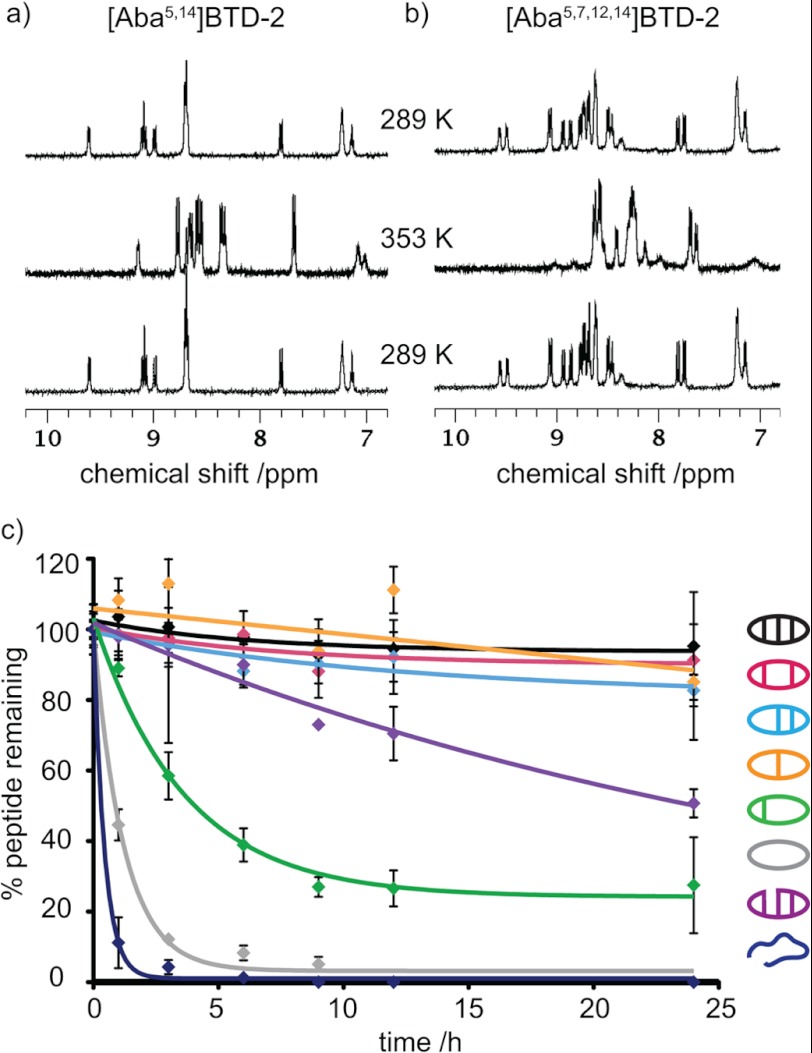FIGURE 4.
Thermal and serum stabilities of θ-defensin analogues. a, 1H NMR spectra (amide region) of [Aba5,14]BTD-2 at 298 and 353 K. The amide proton peaks remain sharp and well dispersed as the temperature is increased from 298 to 353 K and then cycled back to 298 K, showing that the peptide is thermally stable. b, 1H NMR spectra (amide region) of [Aba5,7,12,14]BTD-2 at 298 and 353 K. The amide proton peaks become broad and overlap as the temperature is increased from 298 to 353 K, showing that the peptide becomes unstructured at high temperatures. c, percentage of θ-defensin analogue remaining after incubation in human serum at 37 °C over 24 h.

